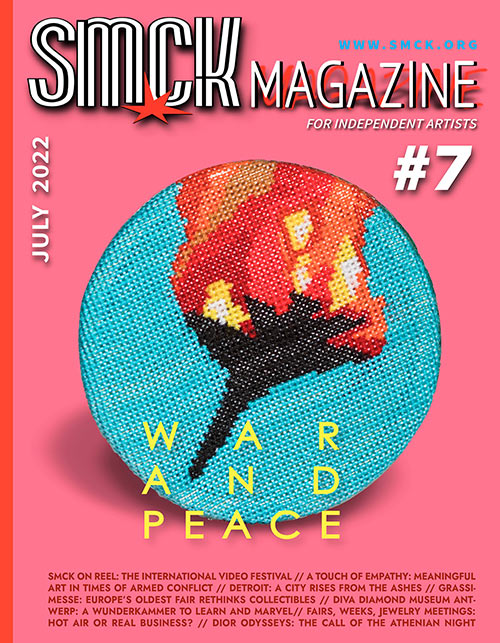EUROPE'S OLDEST FAIR INNOVATIVE REBOUND
GRASSIMESSE SHOULD NO LONGER BE THE INDUSTRY'S BEST KEPT SECRET!
By Loukia Richards & Christoph Ziegler
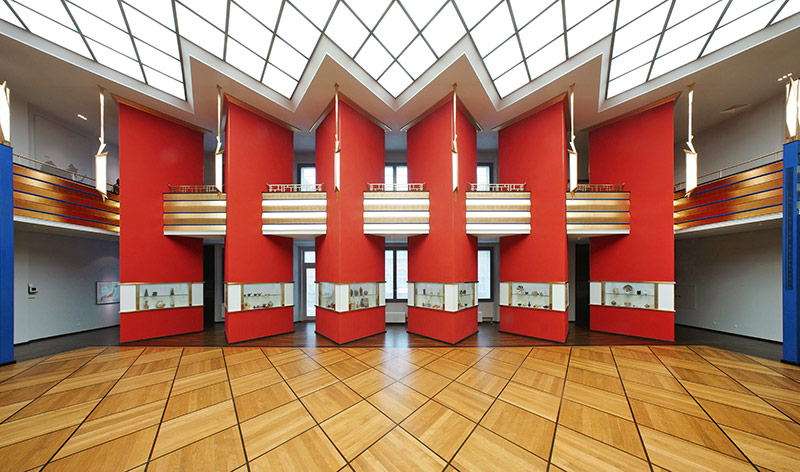 Art Deco Pfeilerhalle. Photo: Christoph Sandig.
Art Deco Pfeilerhalle. Photo: Christoph Sandig.
With five prestigious awards, a strong commitment to the crafts through its purchasing program, affordable fees, about 10,000 visitors from Germany and abroad, and its high standards for quality, Grassimesse Leipzig, Europe's oldest fair of applied arts, should stand beyond competition in the preferences of artists, designers, and crafters.
Yet in a landscape shaped by monetary profit, influencers, and ignorance, professionals need to be reminded that the century-old fair in Germany's fastest growing city should no longer be the industry's best kept secret.
SMCK Magazine had the pleasure of a de profundis conversation with Grassimesse curator Sabine Epple.
WITH A MISSION IN MIND
Leipzig is a major industrial city in the former People's Republic of Germany and European commercial and transport hub since before the second world war.
The Grassimesse handicrafts fair was established there in 1920 and, after a long pause, reopened its doors to the public in the late 1990s.
"Grassimesse started again with a new dynamic", says Sabine Epple, curator of Grassi Museum exhibitions and the Grassimesse. Though Grassimesse is formally known as the International Trade Fair for the Applied Arts and Design, Epple nonetheless notes that "it has always been internationally-oriented".
Unlike many crafts or jewelry 'weeks', which are mainly profit-oriented, Grassimesse remains non-commercial. It dedicates its passion and energy to providing for the needs of the approximately 120 artists who participate each year and contributes to the revival of the crafts.
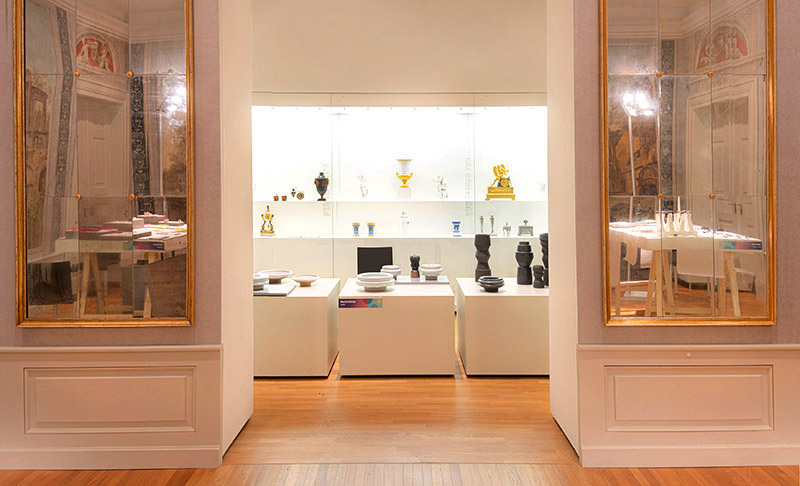 Grassimesse in the Museum’s permanent exhibition. Photo: Grassi Museum.
Grassimesse in the Museum’s permanent exhibition. Photo: Grassi Museum.
The fair is organized by the Grassi Museum of Applied Arts, and Epple sees the organizing the October event as a cultural mission that the museum has to fulfill. "We always seek dialogue with artists and are in constant communication with participants", she adds.
From our own experience with Grassimesse - 2016 and 2019 - we recall Epple as a tireless messenger connecting artists' concepts and needs to the museum's possibilities, always friendly and inventive, inquiring and encouraging.
Grassimesse is funded by participants' fees – which are extremely low for the services rendered – and support drawn by the institution's prestige; the Sparkasse Leipzig public bank has been among Grassimesse's main financial supporters since 1997. Grassi Museum also provides funding to Grassimesse by including it in its regular budget for exhibitions.
The pandemic and its sanitary measures have made things difficult, but also gave the institution new ideas for reaching out to visitors. Short thematic videos were shot, while the museum added a series of visits to crafters' studios to its program. Virtual tours and a regular blog keep applied art lovers alerted to its news and feeds their curiosity about what comes next.
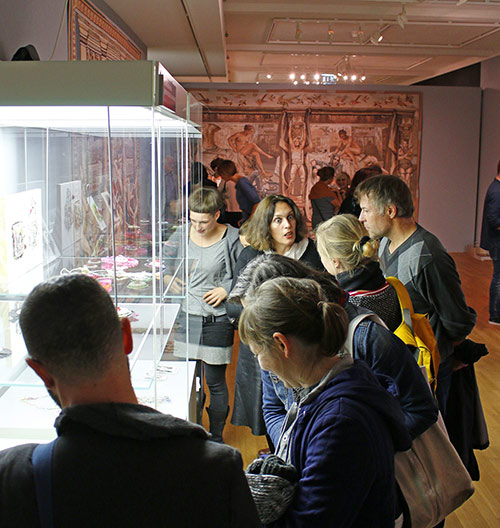
Grassimesse, ZLR Betriebsimperium. Photo: Chr. Ziegler.
Epple knows there is more to be done to promote applied arts and crafts, which by no means enjoy the respect they deserve. She thinks that adopting art market techniques such as auctioning would be beneficial for raising art lovers' awareness of creative disciplines like crafts. "Applied art has affordable prices," she says.
Combined with the ingenuity, high quality, and variety of contemporary design, this new art market segment with relatively low acquisition prices could be a hit.
After the period of lockdowns, Grassimesse returned to action with an innovative concept: it moved some of its approximately 80 stands from the fair rooms to the main museum's exhibition halls, juxtaposing contemporary design against classics and the works of great masters. The result was to trigger a dialogue between then and now, giving visitors more food for thought through this new aesthetic and intellectual experience.
“I have also seen the old masterpieces under a different light,” Epple says. She adds that the challenge of deciding which artists interact with each other was a highly pleasing and interesting task of her curator's job.
In addition to the fair’s awards, the Grassi Museum friends’ association earmarks between 10,000 and 20,000 euros for the museum to buy Grassimesse participants' pieces. In times of cash shortages and hesitant buyers, this initiative offers artists a financial and psychological reward affirming that their work is appreciated.
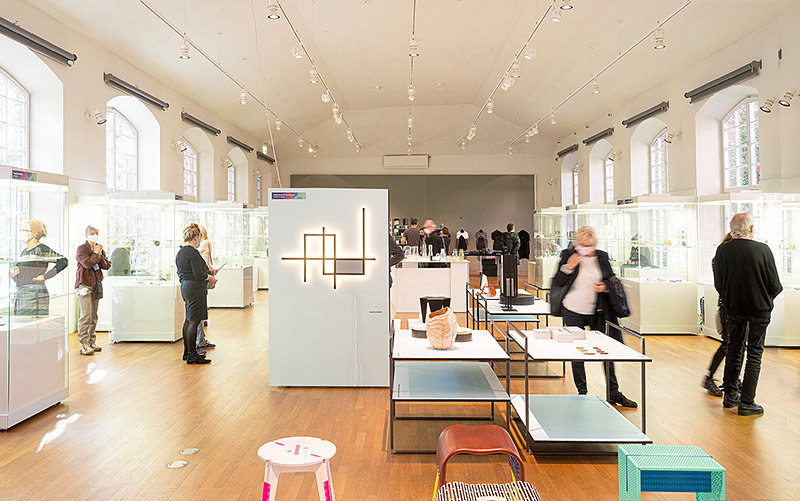 Grassimesse, Orangerie. Photo: Grassi Museum.
Grassimesse, Orangerie. Photo: Grassi Museum.
JEWELRY AND IMAGE
The Grassi Museum’s friends and partners are themselves protagonists in the current exhibition Jewelry and Image. Eleven photographers from Leipzig have been assigned to shoot the Grassi jewelry collection worn by people who, directly or indirectly, are part of the museum's life and activities.
“Almost unnoticed, a collection of contemporary jewelry has grown in the museum over the last decades and is now coming into the public eye. The objects attest to the gradual emancipation of jewelry design as an autonomous form of artistic expression. But what are brooches, rings, and necklaces without one to wear them? Jewelry can only be realized on the body, as a representation of the self or as a symbol of perception to the outside world,” writes Epple in the exhibition statement.
The Grassi Museum’s jewelry collection has grown from 150 pieces in 1990 to 1,200 items. In the exhibition JEWELRY & IMAGE we present approximately 300 pieces by 150 artists. The twenty amateur ‘models’ were photographed with their favorite pieces from the collection in everyday settings that strongly contrast the usually stiff presentations of jewelry. The oversized photos are part of the exhibition design by visual artist Thomas Mückl, and communicate the message that jewelry can be unconventional, approachable, enjoyable.
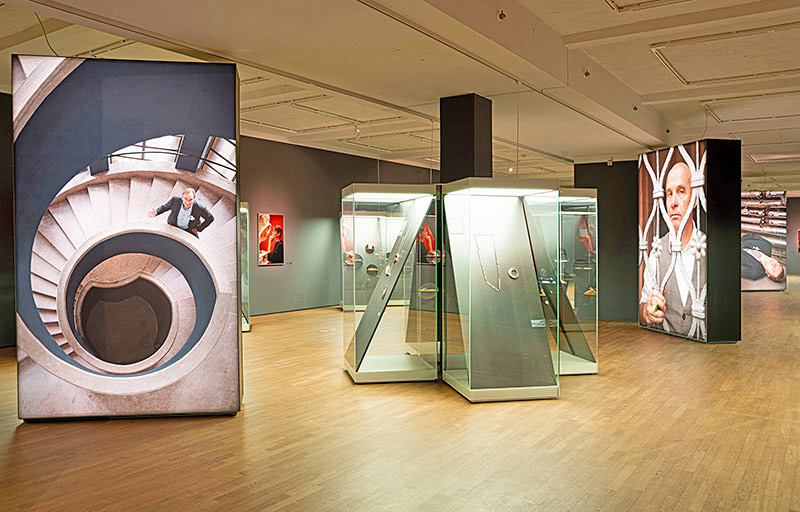 Top + bottom: JEWELRY & IMAGE, exhibition view. Photo: Grassi Museum.
Top + bottom: JEWELRY & IMAGE, exhibition view. Photo: Grassi Museum.
Homepage:
www.grassimak.de
Grassimesse:
www.grassimesse.de
Instagram:
@grassimak








